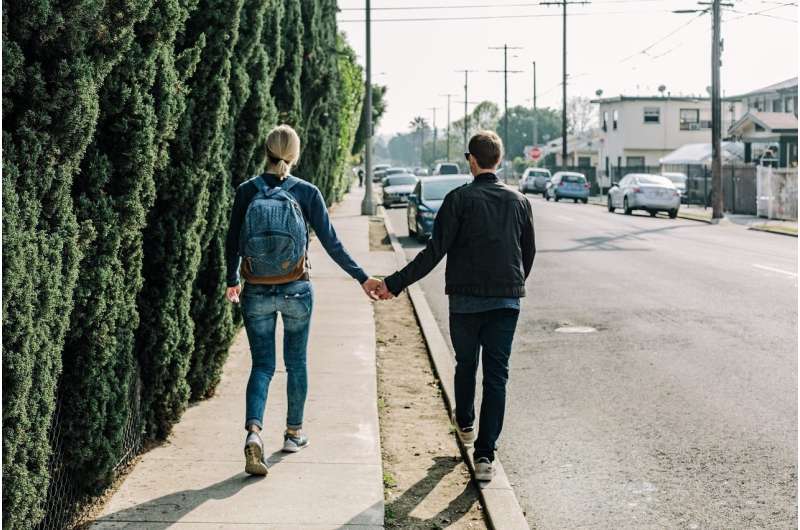Laws meant to keep different races apart still influence dating patterns, decades after being invalidated

If you are single and looking for a romantic partner, chances are that you have used a . But the likelihood that others will like, or even see, your profile .
Studies have found that all people on dating apps, regardless of their own race, are using the app. And all people using dating apps are least likely to contact and .
Until recently, some popular apps, including , , provided that allowed users to categorically exclude daters based on race and ethnicity. Although most apps, including Grindr, removed their ethnicity filters in the past few years, others, such as and .
While people may think that whom they find desirable is a personal preference, attraction is influenced by , the schools people attend, and . who researches race and the law. As I argue in my new book, "," the legacy of discriminatory laws that have been struck down still influences people's romantic preferences by limiting opportunities for interracial relationships to develop.
Segregation laws limited interracial relationships
Until the 1960s, some U.S. state laws prohibited white people from marrying Black Americans, Asians Americans and Native Americans. These laws—known formally as —were in effect in , at some point between 1661 and 1967.
Then, Mildred Loving, a Black woman, and Richard Loving, a white man, successfully challenged Virginia's anti-miscegenation law known as the . They were convicted of violating this law by marrying each other in another state and returning to their Virginia home. In the case aptly named , the U.S. Supreme Court ruled that these anti-miscegenation laws were "designed to maintain White Supremacy" and declared them unconstitutional.
Other old laws in effect until the 1960s also hindered interracial relationships indirectly.
The provided that only free white persons could become naturalized U.S. citizens. Although the extended eligibility to persons of African descent, it did not extend eligibility to other racial and ethnic groups.
The Supreme Court affirmed these laws when it and that people of Asian ancestry were not white and could not become naturalized U.S. citizens. These laws significantly reduced the pool of desirable marital partners by ruling out people of Asian ancestry. The also , except for Filipinos, since the Philippines was a U.S. colony, from immigrating to the U.S.
Congress abolished these race-based exclusions in 1952 when it passed the . But it did not eliminate the U.S. government's preferences for immigrants from Western European countries until 1965, when it passed another that abolished quotas for immigrants from particular countries.
Housing and educational discriminatory laws
Until the late 1960s, federal, state and local , such as redlining and , that segregated African Americans and other racial groups from white people.
These policies determined where people of color could live and send their children to school. Since they could not live in predominantly white neighborhoods, their children could not attend schools with white children, as students were assigned to their local school.
State laws and local practices in , as well as and , among others, , , children to attend separate schools without any white students. These policies' primary goal was to , as the legal and race scholar Reginald Oh has argued.
The legacy of old discriminatory laws
These explicitly discriminatory laws that impeded interracial relationships until 1967 have all been abolished.
The banned housing discrimination in 1968. School districts or exclude children based on race.
There are laws and that prohibit businesses open to the public from discrimination based on race or ethnicity.
Yet, these old laws left a legacy that still limits opportunities for interracial interactions online and offline.
as a result of decades of federal, state and local practices that excluded racial minorities from white neighborhoods.
Houses and apartments in predominately white neighborhoods , as real estate prices have skyrocketed. Affordable housing is also .
As a result of this residential segregation, many Black and Latino children attend what education scholars Gary Orfield and Danielle Jarvie refer to as "" in high-poverty neighborhoods with few white students.
The opportunities for meaningful interactions across race in the workplace——are also limited. Black Americans, for example, are disproportionately , making intimate relationships with the predominantly white managerial and professional staff unlikely.
Boundaries on dating apps
, so you might assume that the lack of opportunities for meaningful interracial interactions at school, in the workplace and around the neighborhood do not matter. I believe that they do matter. By facilitating segregation, these defunct laws not only influence whom people meet offline but whom they are interested in meeting online.
The internet may not have geographical boundaries, but psychological boundaries follow us online.
When seeking a romantic partner, whether online or offline, to them—not people whom they have been taught to see as fundamentally different from their family, friends and neighbors.
Attraction is complicated, and race might always play a role in whom people choose to bring into their bedrooms and family. But I think that people should be concerned by the role that these discriminatory laws continue to play in their intimate lives, especially when it reproduces racial inequality.
Provided by The Conversation
This article is republished from under a Creative Commons license. Read the .![]()




















